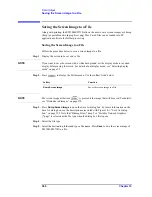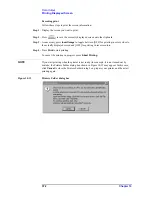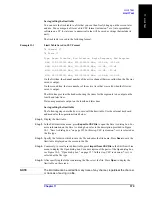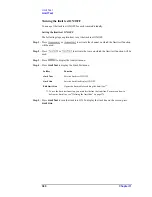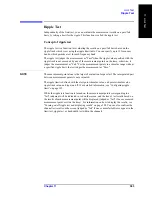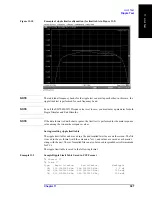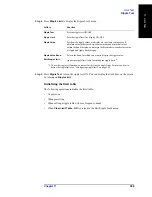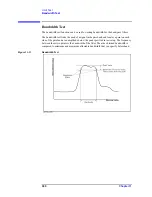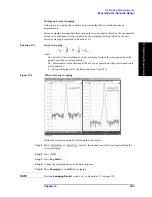
380
Chapter 11
Limit Test
Limit Test
Turning the limit test ON/OFF
You can set the limit test ON/OFF for each trace individually.
Setting the limit test ON/OFF
The following steps explain how to set the limit test ON/OFF.
Step 1.
Press
or
to activate the channel on which the limit test function
will be used.
Step 2.
Press
or
to activate the trace on which the limit test function will be
used.
Step 3.
Press
to display the Analysis menu.
Step 4.
Press
Limit Test
to display the Limit Test menu.
Softkey
Function
Limit Test
Sets the limit test ON/OFF.
Limit Line
Sets the limit line display ON/OFF.
Edit Limit Line
Opens the limit table for editing the limit line.
*1.To use the limit test function, you must first define the limit line. For more on how to
define the limit line, see “Defining the limit line” on page 376.
*1
Step 5.
Press
Limit Test
to turn the limit test ON. To display the limit line on the screen, press
Limit Line
.
Summary of Contents for E5070B
Page 6: ......
Page 30: ...24 Contents ...
Page 34: ...28 Chapter1 Precautions Before contacting us ...
Page 286: ...280 Chapter6 Data Analysis Using the Equation Editor ...
Page 430: ...424 Chapter12 Optimizing Measurements Performing a Segment by Segment Sweep segment sweep ...
Page 538: ...532 Chapter15 Measurement Examples Executing Power Calibration ...
Page 634: ...628 AppendixB Troubleshooting Warning Message ...
Page 732: ...726 AppendixD Softkey Functions Trigger Menu ...
Page 740: ...734 AppendixE General Principles of Operation Data Processing ...
Page 760: ...754 AppendixF Replacing the 8753ES with the E5070B E5071B Comparing Functions ...

